Living Alone in Indonesia
by The Hairpin
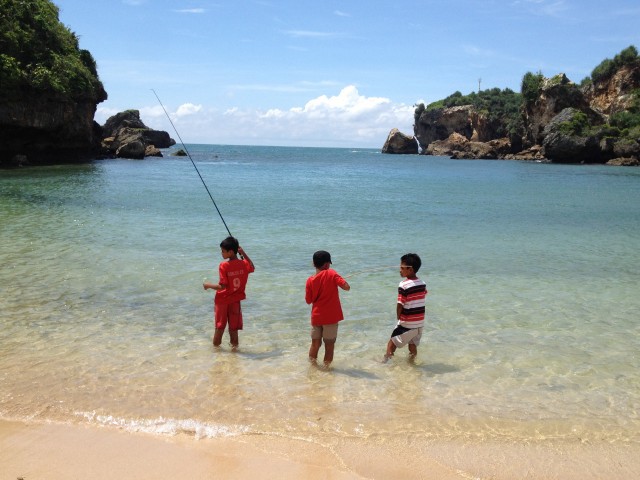
Nina Bhattacharya just finished teaching English in Indonesia on a Fulbright scholarship, and we emailed about it a few weeks ago.
Edith Zimmerman: Was there a moment when you realized that you were making such a huge change to your life? And then just said, “yeah, I’m doing that”? Essentially — what was it like to decide to do this?
Nina Bhattacharya: Oh god, did I agonize about making the commitment. Even though I had been to Indonesia before, my brain could not process the length of time I would be away. Nine months? It seemed unfathomable. While I publicly announced my decision to go almost immediately, it took many long conversations with my parents before I felt certain enough to accept the grant.
I distinctly remember the day when I signed the papers to accept the Fulbright grant. I even made a housemate take my picture as I was signing.
Now I laugh a little when I think about how difficult the decision seemed at the time. The last eight months have flown by, and it’s starting to hit me that I’ll have to leave in four weeks. I don’t feel ready to leave just yet. Which is not to say that living here has always been easy, but the decision to come here was one of the best I’ve ever made.
What did you have for breakfast?
Most days, I usually have a traditional Javanese meal from the school canteen called nasi pecel. It is spicy peanut sauce poured over a bunch of cooked greens, sprouts, and rice. And you get to pick some side dishes, too! I usually like to get an omelette, fried tempeh, and additional veggies. It’s enough to last me for breakfast and lunch. Some of the teachers tease me for eating it almost every day, but I seriously can’t get enough.
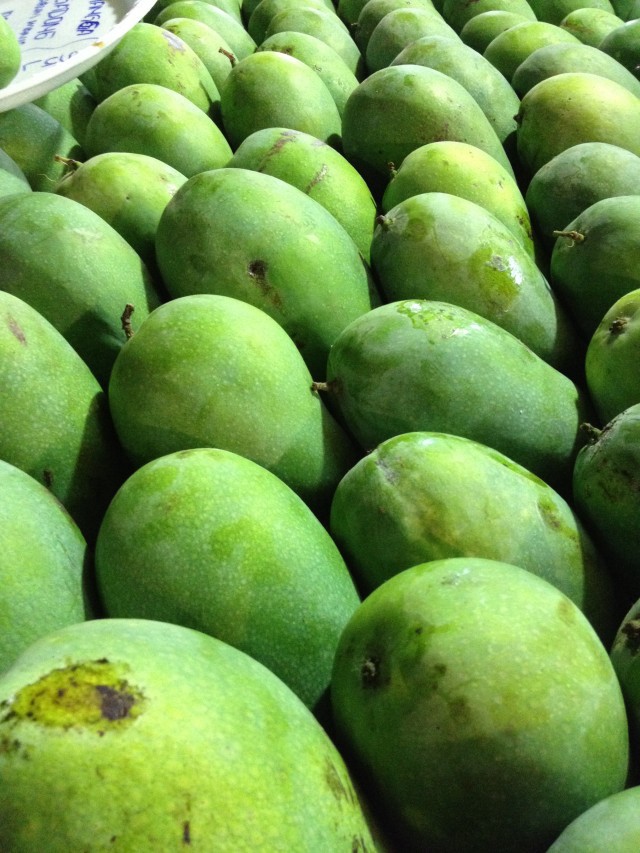
What’s the sweatiest you’ve been recently? Ahhh, that sounded more normal in my head (because of the thing in an email you said about biking and sweating) but now it sounds like I’m harassing you, maybe, and I apologize! But the question stands!!
This is a totally legitimate question, considering I often sweat just by existing in this country. I recently climbed a volcano with my friends, and the non-existent trail was brutal on the way down. We all had made the poor decision of not leaving our luggage at the hotel, meaning we were lugging our stuff through a jungle for five hours. I was pretty much covered in mud and cold sweat by the end of it. On a daily basis, though, I get pretty gross when running around my classrooms.
For those who are curious, dry shampoo, eye shadow primer, foundation primer, and gel eyeliner are all very useful beauty products in this country.
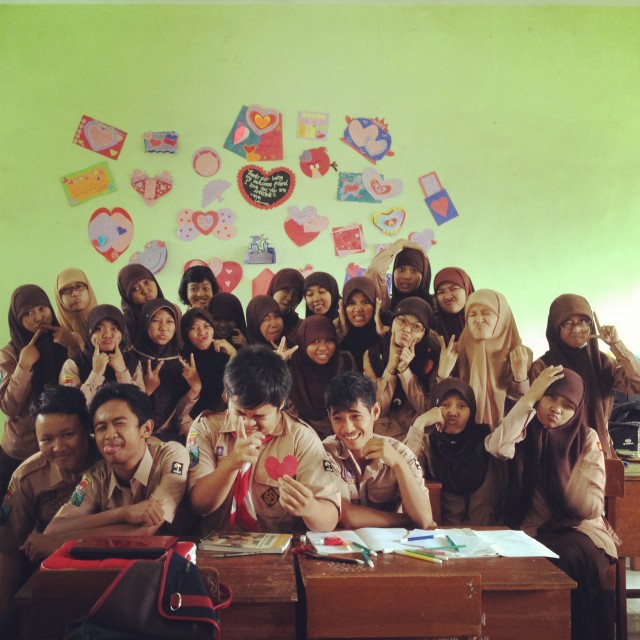
What’s your job like?
I teach about 300 students each week, or all ten sections of 10th grade at my school. I am able to meet with each section once a week to work on conversational English. The curriculum is very rote-based and does not emphasize speaking. I’ve enjoyed trying activities that encourage students to be creative and critical with their thinking. Because it’s my first time teaching, there are lots of ups and downs. Nothing ever goes perfectly, and that’s okay. Overall, I find my job incredibly rewarding for the small “aha!” moments students have in the classroom.
What are 10th graders like these days? (Or, super-mini-profiles of two or three of them?)
I would describe my 10th graders as less jaded than students of the same age in the United States. Lots of earnestness! Here are a few mini-profiles of some of the students with whom I work:
– William is one of my few Christian students. He has a slight lisp, and is incredibly attentive in English class. In the school, William is known for his passion for hip-hop dance — he’s one of the few boys on the dance team.
– Ekie, who is actually an 11th grader, is one of the sassiest people I’ve met. She always has a smart retort at the tip of her tongue, but equally ready to shower One Direction with praise on Twitter in a never-ending stream of tweets. She says she eventually wants to work for Google.
– Novi is a tomboy obsessed with basketball. Her swagger is completely visible even behind the long skirt of her uniform. Abrasive, curious, and kind, she always sends me long text messages that usually begin with, “Miss NinnnaaaaaAaAaaaa :D.”
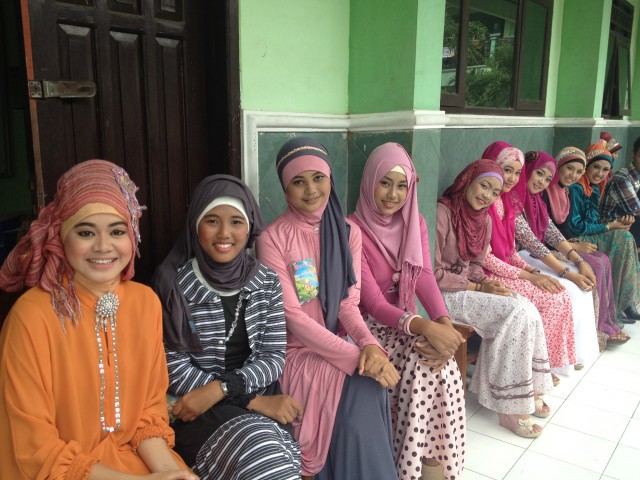
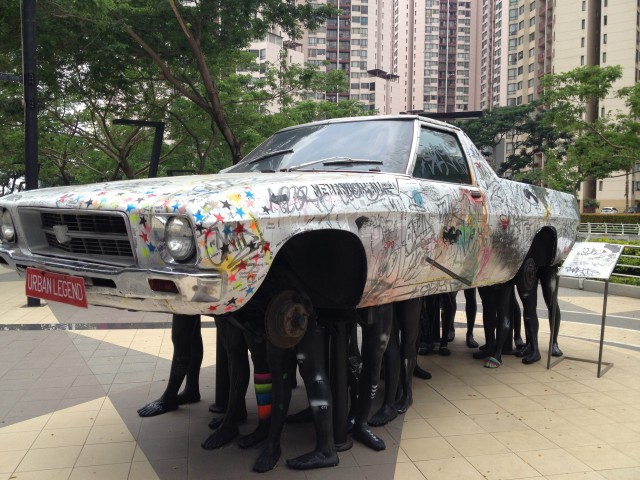
Where do you live?
I live on the island of Java, in small town called Krian. It is an hour outside Surabaya, the second-largest city in Indonesia. For the record, Java is the world’s most populous island, and — according to Wikipedia, anyway — home to 60 percent of Indonesia’s population. My town is home to one department store, as well as lots of small shops and warungs (food stalls). There’s not too much going on otherwise.
I’m lucky to live in a cute, yellow house in a lovely little neighborhood that is just a seven-minute bike ride from my school. There is a swing in my small courtyard, where I like to sit and read when it rains, not to mention about 50 potted plants that always tip over. My kitchen is half-outside, and I sometimes have to run into the house if a bat decides to fly in while I’m cooking dinner. I love my little house dearly.
What’s the boat situation like on Java?
I would say that boats are fairly common along the coast. Many Indonesians still fish from small outriggers. Public boats are packed to the brim with anything you could imagine. One girl I know was on a tiny boat with a bunch of goats and motorcycle.
The best time I was on a boat was going to see orangutans in Kalimantan, the Indonesian part of the island of Borneo. My friend and I slept on a riverboat in the middle of a jungle for a few nights. We could observe much wildlife from the boat itself — from proboscis monkeys to crocodiles to kingfisher birds and more. After a long day of hiking or observing orangutans, we would trade Kindles and read late into the night. There was something satisfying about burning through several candles while reading and floating on a river.
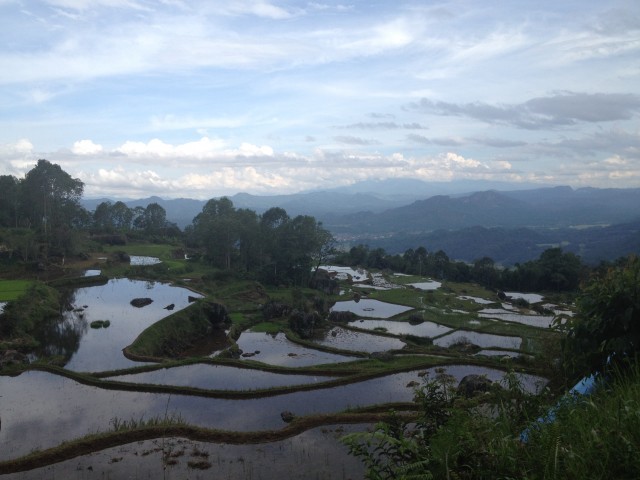
You mentioned what Indonesian people think of as typically American, and that you don’t quite fit it — can you elaborate on both sides of this?
Like in many other countries in Asia, a lot of Indonesians idealize whiteness. And it permeates nearly every aspect of an Indonesian woman’s life, from beauty regimens to what to you see on television. My relationship with skin color here is complicated. Having brown skin allows me to blend in more in crowds. Although I am often called “bule” — the catch-all word for foreigners — it is not yelled at me as I ride my bicycle through town. I feel fortunate to not have stereotypes of “free sex” and promiscuity ascribed to me. Most Indonesians love Indians, having been raised on a plethora of ’90s Bollywood movies.
At the same time, I sometimes find myself wishing for a little of the white Fulbright grantees receive. Indonesians don’t clamor to take pictures with me or seek to practice their English. With my black hair and brown skin, I subvert the perception that all Americans have white skin and blonde hair. Even my school — which I sincerely love! — requested a Fulbrighter with white skin for the following year. Instead, my skin color means I have to fight for my claim to be American.
“Americans, I thought they all had blue eyes?”
“Is only your mother Indian?”
“But real Americans have white skin, right?”
“American? But your face is like an Indian?”
These are just a sample of some of the questions I receive. And to be clear, none of these questions are ever asked with ill intent. It is difficult for many Indonesians to understand how I can simultaneously occupy two identities — “Indian” and “American.” It often requires describing my family’s immigration narrative and explaining that my parents had lived in the United States for more than 30 years. That I was born in the United States.
Every time someone denies my claim to call myself an American, I have to remind myself that facilitating cross-cultural exchange is one of Fulbright’s goals. I try not to forget that my small interactions are integral in articulating America’s diversity to the rest of the world.
They just don’t know that their words sometimes hurt me. Living in Indonesia has, however, made me even more conscious of my identity as a woman of color. Working through these issues is an ongoing process, and something I will have to continue reflecting on as I return to the United States.
What’s the pop music like there? What’s popular, I guess.
First, Indonesians of all ages absolutely adore karaoke. Frankly, many of them have such beautiful voices that I’m often too embarrassed to try karaoke myself. You’ll be immediately popular if you at least give it a shot. I recommend singing a ballad — Adele is a good choice. It would not surprise me if more people knew the lyrics to “Someone Like You” than the lyrics to the national anthem.
When I started teaching, I made my students talk about their favorite musicians if they wanted me to accept their friend request on Facebook. My favorite response? “Miss, my favorite musicians are Avril Lavigne, One Direction, LMFAO, Pitbull, and Celine Dion.” This is an accurate summary of youth tastes in music.
K-Pop is hugely popular. K-anything, really. One of my female students actually started crying when she saw her favorite K-pop singer perform … on television. “Gangnam Style” was so popular that I mastered all the dance moves, thanks to my students. (If you’re curious, the Harlem Shake has been taking off the past several weeks.)
Indonesian pop and rock takes two forms: ballads and K-pop-inspired girl groups. The ballad “Separuh Aku” by NOAH is on heavy replay on the radio and at my gym. When boys are late to my class, I often make them sing girl group Cherrybelle’s song, “You Are Beautiful.” Finally, I’m not ashamed to say that “#eeeaa,” from tween boy band Coboy Jr., is one of my favorite Indonesian songs.
I would be remiss if I didn’t mention dangdut, a type of Indonesian music that draws inspiration from Bollywood, Arabic, and Malay music. Dangdut has been around since the ’50s, and occasionally raises the hackles of religious conservatives for its “vulgar” performances, which frequently feature gyrating young women.
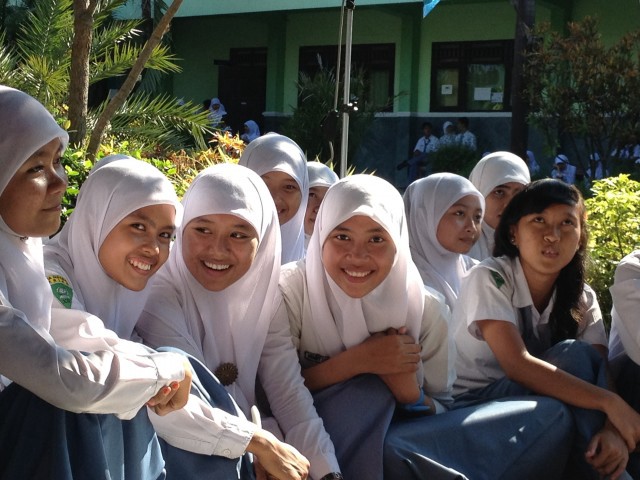
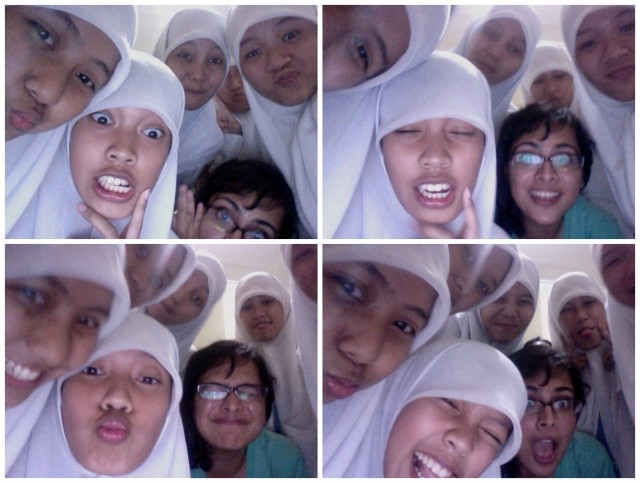
If this isn’t too invasive — what’s the best connection you’ve made since you’ve been there?
No! This is a really good question. There are not many young people my age in Krian, because most of them are either studying or working in larger cities. As a result, I find myself spending a lot of time with Bu Nova, the Indonesian language teacher at my school. (“Bu” is the term for “Mrs.” in Indonesia.) She has become what I like to call my “Indonesian mom.”
While Bu Nova doesn’t speak any English, she is perpetually patient and understanding with my sometimes broken Indonesian. She listens to my questions seriously and always answers thoughtfully. I love that I don’t have to worry as much about propriety, which is some that is important in Javanese culture. Her entire family always goes above and beyond to make sure that I’m doing okay. There is something really comforting about knowing that I just walk down the street to chat over a cup of Nescafe or dinner.
What’s the best outfit you’ve worn so far?
The outfit I wore to my friend Miranda’s wedding is one of my favorites. Because she was such a close Indonesian friend, I really wanted to wear traditional Indonesian clothes to the wedding. I wore a kebaya, or a blouse, of sheer pink lace over a batik-print skirt.
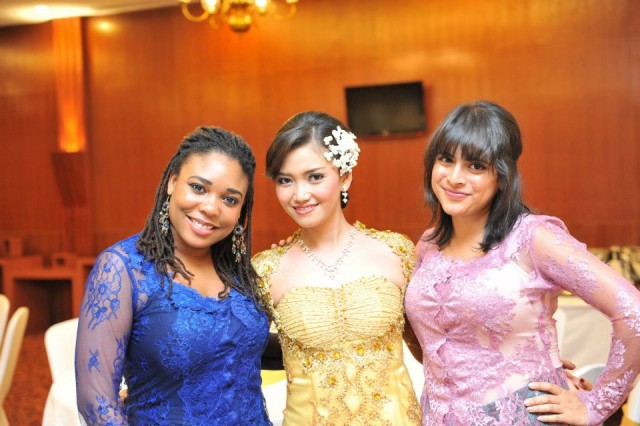
Have any animals bitten you?
I went to the beach last week and stepped on a little crab. That sort of hurt! But other than that, nope. Which is fortunate, considering the rabies vaccine is ridiculously expensive and I opted not to get it before coming to Indonesia. I try to avoid monkeys and dogs, though. Just in case.
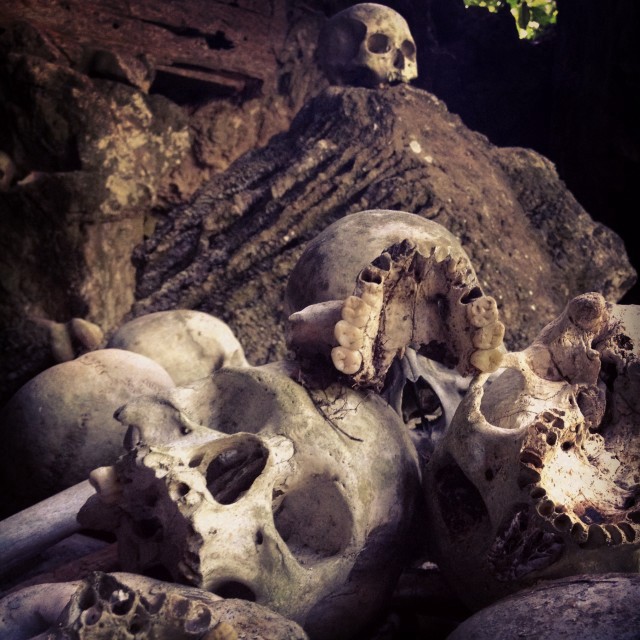
What’s the loneliest you’ve been?
Two moments come to mind. The first was a month into living in Indonesia, right after orientation and my first night in my town. My boyfriend at the time had broken up with me the day before. I felt very adrift and sad in a new place where I knew no one. The second time was returning home after a winter break vacation with my mom and my sister. There was nothing lonelier than coming home alone to a dark, empty house. I am lucky to have family and friends who encouraged me to get out of my house when all I wanted to do was crawl into bed with my Kindle.
The happiest?
It is all of the little moments, honestly. Successfully navigating the traditional market on my own. Watching my students dream up fabulous dream vacations to places like Crabby Patty Island and Vampire Land. Whizzing past the rice paddies near my house on my bicycle. Traveling. Having my house full of students practicing their speeches for an English competition. Stopping at the juice and french fry stand for some fresh sirsak (soursop) juice. Figuring out how to bake cookies in my rice cooker. Feeding an orangutan a banana. Having someone ask me if I’m Indonesian after conversing in bahasa Indonesia. Going to a school basketball game with my kids. Watching television with my ibu and her family.
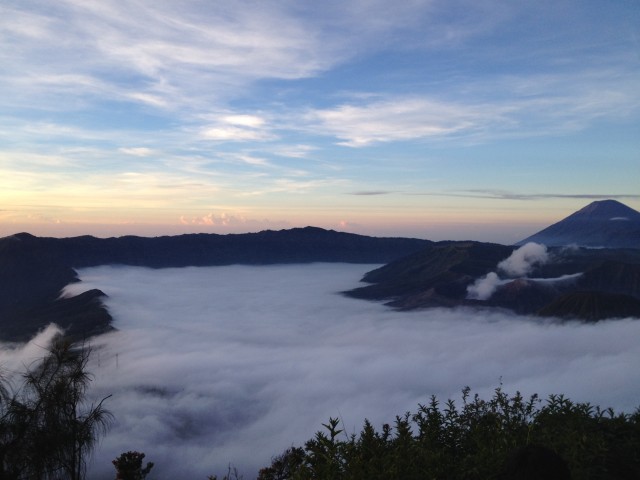
Previously: Alone in the Tetons
Nina Bhattacharya was a Fulbright English Teaching Assistant in Indonesia and is now traveling through Southeast Asia. In her free time, she enjoys drinking Nescafe, dancing Gangnam Style with her students, and getting cream baths.